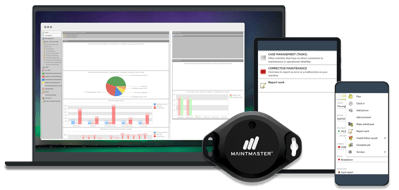As a maintenance manager, you're the backbone that keeps everything running. But the behind-the-scenes nature of your role comes with unique pressures that outsiders rarely understand. Let's take a closer look at the top five challenges and what makes them so difficult to overcome:
1. "You are the expert on everything... Right?
You don't just manage people, you manage complex systems. From intricate machinery with specific points of failure to the ever-evolving landscape of safety regulations and compliance standards, the knowledge you need is vast and technical. It's impossible to be a true master of everything, especially as new technologies and complex equipment enter your facility.
How to meet this challenge:
- Prioritise skills development: Focus training on your critical equipment and systems. If hydraulics is a perennial problem, make that your focus.
- Tap into specialised networks: Join online forums or industry groups that focus on your niche. You'll find valuable advice for the unique machines or systems you manage.
- Cultivate internal experts: Can you empower a senior technician to specialise in a problem area? This will free you up and develop your team.
2. When expectations don't match reality
You're tasked with maximising uptime and asset life, while minimising accidents and environmental impact. But the time, tools and budget you have don't always match these lofty goals. You're being asked to do the impossible, and the constant struggle is wearing you down.
How to meet this challenge:
- Speak management's language: Focus on the KPIs that matter to them: uptime, asset life, reduced unplanned downtime, etc.
- Show, don't just tell: Use your CMMS or tracking tools to visualise the impact of underfunding. "This machine breaks down twice a month, costing us X hours of production" is more powerful than "We need more money".
- Suggest phased solutions: Can the whole project be broken down into smaller chunks with measurable ROI at each stage? This may be palatable if it's a big ask.
3. Balancing the budget
You know that aging, breakdown-prone equipment is a ticking time bomb. A newer, more efficient model would reduce downtime and energy costs in the long term. The problem? Securing the funding is an uphill battle, especially when it competes with projects that directly impact the bottom line. You have to play the role of soothsayer and financial wizard, justifying every penny spent on maintenance.
How to meet this challenge:
- Calculate the total cost of ownership: Include not only the purchase price, but also energy savings, reduced labour costs for repairs, and the potential impact of downtime when making your case.
- Highlight the risk of inaction: How will further breakdowns affect production schedules, customer service or even safety? Sometimes the cost is more than dollars and cents.
- Explore financing options: Could leasing, phased payments or energy efficiency rebates make these upgrades more feasible?
4. Stuck in the past with paperwork
Outdated systems are holding you back. Critical information is lost in handwritten notes, equipment manuals are buried in dusty cabinets, and trying to decipher the decades-old spreadsheet that tracks maintenance schedules is a headache. This chaos leads to miscommunication, missed PM tasks and the constant feeling that you're one step behind.
How to meet this challenge:
- Focus on high-impact upgrades: Can you start by digitising your preventive maintenance (PM) schedules first? This often provides the fastest return on investment.
- Leverage your CMMS: Use its built-in reporting tools to analyse where bottlenecks and time-wasting processes are costing you the most.
- Get tech-savvy technicians: Provide basic training on how to use the mobile app so they can enter data in the field, not hours later at their desks.
5. Not enough hands (or parts) to go around
Machines don't care about your staff shortages. When something breaks on a busy production day, you're juggling staff shortages with the urgency to get things up and running again. Scrambling to find the right part - or worse, finding out it's out of stock - sends your stress levels through the roof. Every second of downtime feels like a direct hit to your company's profitability and reputation.
How to meet this challenge:
- Cross-train your team: Can you equip technicians with a wider range of basic skills to handle more tasks without outside help?
- Optimise your PM programme: A robust preventive maintenance program, supported by your CMMS, can prevent breakdowns before they become critical.
- Create a critical spares list: Analyse your breakdown history. Keeping certain parts on hand may be cheaper than losing production while you wait.
Being a maintenance manager is tough, but incredibly rewarding. By facing these challenges head-on, embracing technology and establishing open communication, you'll maximise efficiency, reduce downtime and ultimately contribute to the success of your business.







